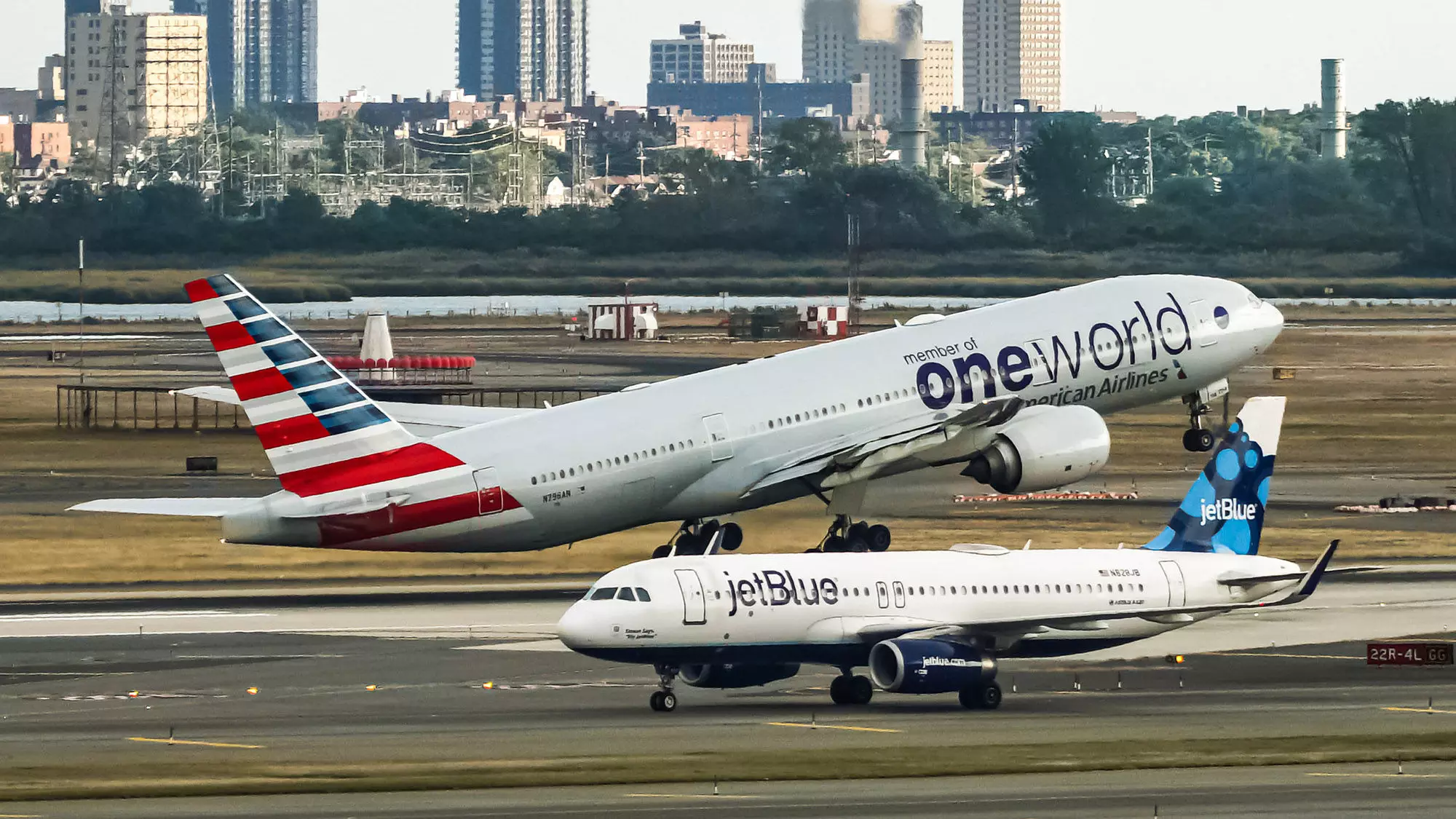In a recent turn of events that has sent shockwaves through the aviation industry, American Airlines has launched a lawsuit against JetBlue for over $1 million. This dispute arises from the companies’ troubled Northeast Alliance (NEA) partnership, which aimed to streamline operations across key airports in Boston and New York. Envisioned as a growth catalyst in the post-pandemic era, the partnership initially seemed promising. However, its demise underscores the complexities that often govern airline alliances and serves as a reminder that the air travel landscape can shift dramatically.
The challenges began in earnest when the U.S. Department of Justice, alongside several state entities, intervened with an antitrust lawsuit in 2021, questioning the legality of the NEA. The ensuing trial exposed frailties within the partnership, eventually leading to a federal ruling against it as a violation of the Sherman Antitrust Act in May 2023. This outcome not only destabilized the operational framework that both airlines sought to establish but also ignited a financial rift, with American Airlines now claiming that JetBlue has fallen short on its revenue-sharing commitments.
Understanding the Financial Dispute
Central to the lawsuit is the Mutual Growth Incentive Agreement (MGIA), a document intended to facilitate revenue sharing between American and JetBlue from April 2022 to July 2023. According to American’s legal filings, this agreement involved an accounting methodology meant to establish which airline would benefit from incremental revenues, derived from various shared services and operations. However, the realities of their partnership quickly diverged from expectations, leading to a contentious interpretation of the agreement’s financial outcomes.
Reports indicate that discrepancies arose when American sent multiple invoices to JetBlue spanning over a year, culminating in a final invoice intended to capture any remaining dues. JetBlue’s calculation of what it owed allegedly fell short by approximately 6%, igniting further contention. American’s assertion that JetBlue has willfully neglected to fulfill payment obligations highlights not just a simple financial dispute but indicates deeper operational frustrations that have crystallized since the NEA’s termination.
The Aftermath: Impacts on Future Partnerships
As both airlines grapple with the fallout from this legal confrontation, the larger implications transcend their individual disputes, affecting industry norms for collaboration. American Airlines shared internal communications revealing their frustration over failed attempts to renegotiate the partnership. The expressed desire to further enhance network capabilities indicates that both players recognize potential benefits in collaboration, yet operational and strategic misalignments have proven insurmountable—at least for now.
This predicament not only questions the symbiotic nature of airline partnerships but also raises critical inquiries about the foundational trust among partners in a market that thrives on agility and cooperation. It is clear that previous failures can breed skepticism, making both parties cautious about reconvening for possible future collaborations.
A Broader Perspective on Airline Alliances
The American-JetBlue conflict is emblematic of a trend in the airline industry, where regulatory forces and competitive dynamics often create barriers to effective partnership. Though alliances like those attempted in the NEA are intended to capitalize on shared strengths, they inevitably contend with legal scrutiny and divergent interests. As public demand for air travel rebounds, the critical balance between competition and cooperation is continually tested.
Airlines face the dual pressures of satisfying regulatory demands while vying for market share—a tightrope walk that can lead to unhealthy partnerships fraught with litigious risk. The outcome of this legal dispute may serve as a cautionary tale for future collaborations, prompting airlines to adopt more transparent, clearly-defined agreements to mitigate misunderstandings and fortify mutual trust.
In the fast-moving world of aviation, resolution to conflicts like these remains paramount, and how American Airlines and JetBlue navigate this turbulence could redefine the landscape for airline alliances for years to come. As predictably as routes change and timetables adjust, the dynamic between competition and cooperation continues to evolve, compelling industry stakeholders to rethink strategies moving forward.


Leave a Reply